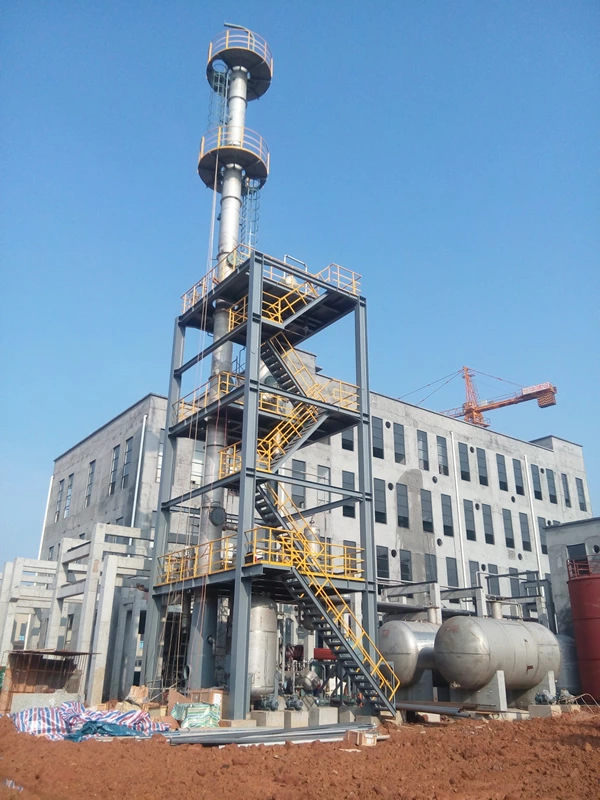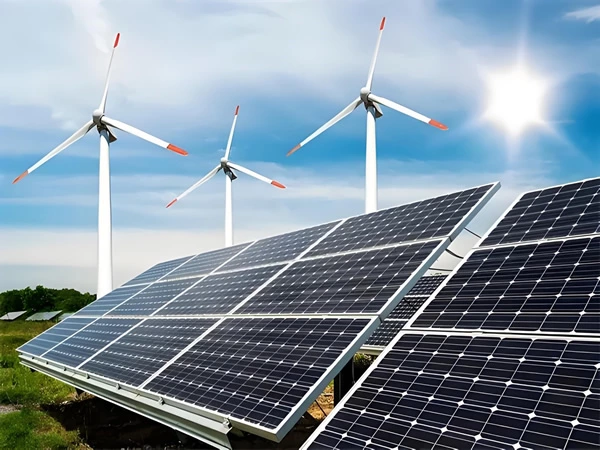
1. Project Background
In the production process of waterborne polyurethane, acetone is often used as a solvent to adjust the viscosity of resins and improve product performance. About 0.1-0.2 tons of acetone are consumed for every ton of waterborne polyurethane produced. The acetone-containing wastewater generated after production usually has an acetone content of 5%-15%. If it is discharged directly, it will not only cause waste of organic solvents, but also cause environmental pollution problems. At the same time, the company needs to bear high hazardous waste treatment costs. When treating such wastewater with traditional single distillation technology, there are disadvantages such as high energy consumption, difficulty in separating low-concentration acetone, and large equipment investment. In addition, the residual acetone in the wastewater after distillation is still 0.5%-1%, which cannot meet environmental emission standards. In order to achieve efficient recovery and green production of acetone, a company innovatively adopts distillation + pervaporation membrane coupling technology, uses 304 stainless steel as the main material, and builds a DN800×24300mm distillation tower to overcome the problem of low-concentration acetone separation.
2. Process Flow
(I) Pretreatment
The acetone-containing wastewater first enters a static sedimentation tank to remove suspended impurities and unreacted aqueous polyurethane colloids by gravity sedimentation; then it is further filtered through a 10μm bag filter to prevent impurities from clogging subsequent equipment and membrane components; then the pH of the wastewater is adjusted to neutral to avoid damage to the equipment and membrane materials in an acidic or alkaline environment, ensuring stable operation of the system.
(II) Distillation System
The pretreated wastewater enters a DN800×24300mm distillation tower for preliminary concentration under normal pressure. The tower is filled with high-efficiency structured packing to improve the gas-liquid mass transfer efficiency. As the temperature rises, acetone (boiling point 56.5℃) and part of the water vapor evaporate from the top of the tower, and after cooling by a condenser, an acetone-water mixture is formed (the acetone content is increased to 30% - 40%); the acetone content in the wastewater discharged from the bottom of the tower is reduced to 2% - 3%, and is sent to the subsequent treatment process.
(III) Pervaporation membrane separation system
The acetone-water mixture obtained by distillation enters the pervaporation membrane device. The device uses an organic-philic pervaporation membrane, and the membrane material has high selectivity for acetone. Driven by the pressure difference formed by vacuuming on one side of the membrane component, acetone preferentially passes through the membrane layer and is condensed and collected on the other side to obtain an acetone product with a purity of ≥99%, which can be directly reused in the production of water-based polyurethane; the acetone content in the aqueous solution that does not pass through the membrane is less than 0.1%, which is combined with the wastewater at the bottom of the distillation tower and discharged after biochemical treatment to meet the standards.
(IV) Post-treatment
The small amount of concentrated liquid produced by the pervaporation membrane system contains trace high-boiling impurities and is returned to the distillation tower for secondary treatment; the condensed water generated during the operation of the entire device is partially reused for pH adjustment in the pretreatment process after being tested and meeting the standards, realizing the recycling of water resources.
3. Technical Advantages
(I) High efficiency and low consumption, breaking through the concentration bottleneck
Distillation-pervaporation membrane coupling technology achieves complementary advantages. The initial concentration of distillation reduces the membrane processing load, and the deep separation of pervaporation membrane breaks through the problem of low-concentration acetone recovery. Compared with the traditional single distillation technology, the acetone recovery rate of this device is increased from 85% to more than 98%, the energy consumption is reduced by 50%, and the steam consumption is reduced from 3t/t wastewater to 1.5t/t wastewater, which significantly reduces the production cost.
(II) Precise separation and high-quality products
The pervaporation membrane has high selectivity for acetone, and there is no phase change in the separation process, which avoids the problem of incomplete separation caused by the azeotropic effect of traditional distillation. It can stably produce acetone products with a purity of ≥99%, meet the strict requirements of water-based polyurethane production on solvent quality, and reduce product quality fluctuations caused by solvent impurities.
(III) Corrosion-resistant and long-life design
The main equipment is made of 304 stainless steel, which can effectively resist the corrosion of trace organic acids and alkalis that may exist in acetone-containing wastewater, and the service life of the equipment is up to 10 years. At the same time, the membrane component adopts an anti-pollution design, and the performance is well restored after regular chemical cleaning. The replacement cycle is 3-5 years, which reduces the maintenance cost of the equipment.
4. Application fields
(I) Waterborne polyurethane industry
Designed specifically for waterborne polyurethane production enterprises, it realizes the recycling of acetone solvents, reduces the cost of raw material procurement, reduces the amount of hazardous waste generated, helps enterprises meet environmental protection regulations, and enhances industry competitiveness.
(II) Other coatings and adhesives industries
It is suitable for the recovery of organic solvents such as acetone and butanone in the production process of acrylic resin, epoxy resin and other coatings and polyurethane adhesives. By adjusting the membrane material and process parameters, it can be flexibly adapted to different systems to promote the green development of the coatings and adhesives industry.
(III) Fine Chemicals
In fine chemical scenarios such as pharmaceutical intermediate synthesis and pesticide preparation production, this technology can effectively recover solvents such as ethanol and isopropanol for low-concentration organic solvent wastewater treatment, achieve resource recycling and energy conservation and emission reduction, and meet the sustainable development needs of the fine chemical industry.


